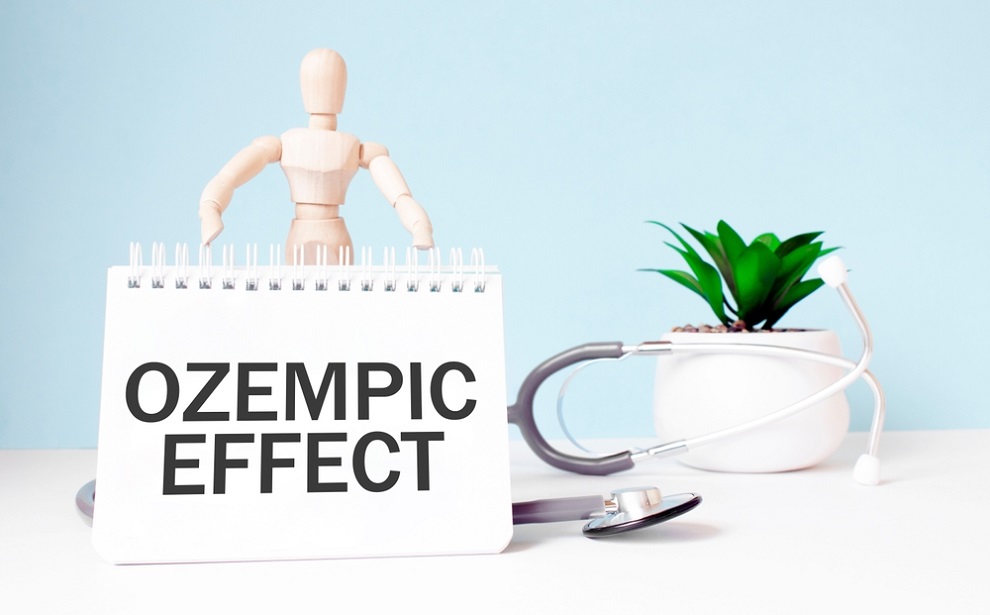What to Know About Healthy Sperm
- Sperm quality begins to decline after age 40
- Healthy sperm needs strong count, motility, and shape
- 15 million+ sperm per mL is considered normal
- At least 40% should be actively moving
- Lifestyle, heat, and diet all affect sperm health
- Triclozene supports testosterone without lowering sperm count
- Consult a urologist if you're having trouble conceiving
Fertility issues can affect men of any age, but sperm quality naturally declines around age 40-45. If you are trying to conceive, this can be frustrating. But, what does healthy sperm look like?
The volume, motility, and morphology of a semen sample determine healthy sperm. Read on to learn more about how to tell if you have healthy sperm and how to promote stronger sperm cells.

What Does Healthy Semen Look Like?
The penis ejaculates white fluid called semen. This fluid contains sperm cells and seminal fluid that transports them. Healthy semen is usually sticky and cloudy-looking. Seminal fluid nourishes the sperm to last up to five days. This allows the sperm to survive in the female reproductive tract long enough to meet with the egg for fertilization.
A healthy semen sample can contain hundreds of millions of sperm. However, diet, exercise, injury, and medications can affect the quality of your semen. How healthy your sperm is plays a role in the pregnancy and health of the resulting baby. So, it is vital that if you are planning to conceive, you take steps to make sure your sperm is strong and viable.
Signs of Healthy Sperm
Strong, healthy semen has volume, motility, and morphology that give it the best chance of surviving to fertilize an egg. The smell and color of your sperm may also indicate the overall health of your semen. Each of these signs works together to give you an overall picture of your fertility.
Volume
Volume refers to the number of sperm in a milliliter (mL) of semen. It's difficult to get your partner pregnant with a low sperm count. A normal ejaculate sample has between 20-150 million sperm per milliliter, but according to the World Health Organization (WHO), anything above 15 million/mL is considered normal.
To determine your sperm count, you'll need to visit a fertility specialist and provide a semen sample for analysis.
Studies are conflicted about whether a man's sperm count increases or decreases as they age. Some studies suggest that sperm concentration decreases around 3.3% per year, others suggest there is little or no change. Others saw an increase in sperm production with age. We need more studies to fully understand how age affects your semen volume.
Motility
Another quality of healthy sperm is how effectively the sperm moves. Sperm cells have tail-like appendages that give them the movements they need to swim to meet the egg. The female reproductive tract produces progesterone, a hormone that boosts sperm motility. The sperm's tail becomes stronger and generates more swimming force to get a surge or movement that penetrates the outer layer of the egg to begin fertilization.
For a healthy semen sample to be fertile, approximately 40 percent or more semen must be moving. However, the more sperm you have moving, the better. Unlike sperm volume, there is evidence to suggest that sperm motility decreases with age. Motility decreases around 0.06-0.17% each year of age.
Sperm motility occurs when the sperm passes through the prostate gland and epididymis. So, some researchers hypothesize that age-related decline of the post-testicular glands in the male reproductive system may alter the sperm's mitochondrial functioning.
Morphology
The shape of sperm, also known as sperm morphology, is also an indication of male fertility. Normal sperm cells have an oval head that contains a nucleus and carries 23 chromosomes. It also has a tail that is much longer than the head. The tail is powered by the mitochondria. It should be uncoiled and have an intact midpiece.
If a sperm cell has misshapen heads, crooked tails, or double tails, it struggles to reach the egg. Abnormal numbers of chromosomes or other unusual shapes also make it harder for the sperm to penetrate the egg. These abnormal sperm cells may make conception more difficult but studies suggest that there is no significant relationship between misshapen sperm and birth defects.
Sperm morphology does decrease with age by about 0.2 to 0.9% per year.
Semen Color
Normal semen is usually off-white or slightly yellow. It should be jelly-like, almost like egg whites. Watery semen is when the semen is thinner and more fluid. It is usually nothing to worry about. It can be due to frequent ejaculation, overheated testicles, or drinking lots of water.
However, if your semen continues to be watery this could be caused by a zinc deficiency or an indication of low sperm count.
If your semen has a different color, discoloration may signal infection, inflammation, or trauma. Red or brown semen may be an indication of blood in the semen called hematospermia. A small amount of red or brown semen is usually caused by ruptures in tiny blood vessels in the seminal vesicles during erection or ejaculation.
Yet, red or brown semen can also be an indication of an enlarged prostate, sexually transmitted infections, kidney or bladder stones, high levels of heavy metals in the body, or inflammation of the epididymis or testicle.
Yellow or green semen is usually a sign of infections, such as prostate infection or STIs such as chlamydia, gonorrhea, and trichomoniasis. Yellow semen can also be a sign of jaundice. Pyospermia is another cause of yellow or green semen. This condition causes high concentrations of white blood cells in the semen. These can lead to male infertility and weakened sperm.
If you notice discolored semen, it is important to seek out a healthcare professional to treat the condition.
Semen Smell and Taste
The smell of semen is usually musky or floral. The taste can vary between salty, sweet, or bitter. Healthy semen has an alkaline pH balance that lands in the 7.2 to 8.0 range. More alkaline pHs make semen more bitter or salty whereas higher fructose content can give the semen a sweet taste.
Foods can also change the taste and smell of semen, such as alcohol consumption, asparagus, cabbage, coffee, garlic, and onions. Supplements may even give your semen a metallic taste.
If you have a urinary tract infection (UTI) or sexually transmitted infection (STI), your semen may have a strong, unpleasant or fishy odor.
If your semen has an odd odor or taste, let your healthcare provider know so that they can give you sound medical advice to treat any medical conditions present.
Ways to Promote Healthy Sperm
There are several ways that you can promote sperm health.
Healthy Diet
Eating well is a good first step. Try to take in a balanced diet with chicken, fish, vegetables, fruits, and whole grains. Try to avoid processed foods and choose lean cuts of meat. Nuts may also help improve your sexual health.
Lycopene from tomatoes and watermelons can reduce reactive oxygen species in your body and improve sperm count and motility. Vitamin C from fruits and vegetables such as oranges, berries, and spinach can also help you produce more sperm. Vitamin B-12 found in fish, meat, and dairy can reduce inflammation and oxidative stress, freeing your body from harmful free radicals.
Caffeine in sodas, coffee, and energy drinks may damage sperm DNA and decrease sperm count if you consume more than 3 cups a day. Caffeine consumption also raises the risk of miscarriage. If you are trying to conceive, opt for only drinking two cups or less of caffeine a day.
You should also be careful about how much alcohol you consume while trying to conceive. More than 40 ounces of beer, 25 ounces of wine, or 7.5 ounces of spirits will cause lower sperm count and reduce motility.
Temperature
For years the word on the street has been that men who wear boxers have more sperm than men who wear briefs. Although high heat to your scrotum can reduce your sperm count, your underwear preference may not make a big difference. Studies are pretty much divided on whether the type of underwear you choose affects your sperm count.
Some studies even suggest that your body may compensate for the extra heat on your testicles. Further studies are needed to get a full picture of whether or not underwear impacts sperm health. The studies conducted to date have not accounted for other variables such as clothing choices as part of their analysis.
It is important to note that restrictive clothing that reduces circulation to your genitals or increases your body temperature may decrease the motility of your sperm. Testicles typically remain about 2 degrees cooler than your core body. Repeated visits to the hot tub can cause impairment of sperm production.
Prolonged fever and illness can also affect male fertility. If you've been sick, it could take time before sperm quality returns to normal. If you stand in front of a hot oven or have your laptop on your lap all day, these could also possibly emit enough heat to impair sperm production, but more studies are needed to fully understand how such things impact male fertility.
Exercise
Another way to promote healthier sperm is to exercise. Low activity and high body mass often contribute to poor semen quality. Obesity can also affect your testosterone levels and lower your sex drive. Exercising, even lightly, may help to promote weight loss and increase your sperm count.
Medical Support That Preserves Fertility
If you're struggling with symptoms like low energy, reduced libido, or difficulty building muscle, even after improving your lifestyle, there are fertility-conscious medical options worth exploring.
Triclozene is a once-daily pill formulated by Male Excel to naturally support testosterone production and thyroid function without compromising sperm health. It contains clomiphene citrate (Clomid), a medication that stimulates your body's own testosterone production, along with thyroid-boosting compounds in a proprietary blend.
Unlike traditional testosterone replacement therapy, which can lower sperm count, Triclozene supports hormone balance while preserving fertility.
Key Benefits:
- Boosts testosterone naturally while maintaining fertility
- Supports thyroid function for better energy and metabolism
- Provides once-daily convenience with a comprehensive hormone-support formula
If you're looking for a proactive way to support hormonal health without risking your ability to conceive, Triclozene may be a safe, effective option.

Fertility Issues in Men
Fertility issues aren't just a problem in women. Men can be affected by them, too. If you have been trying to conceive for a while unsuccessfully or believe that you may be having issues with your sperm count, consult a medical professional to get a semen analysis.
A semen analysis measures the volume and quality of a man's semen. The test involves masturbating into a sterile cup or using a special condom that collects a sample while you are having intercourse with your partner. Before the test, you should abstain from ejaculation for 2 to 3 days but no longer than 5 days to get an accurate measurement.
Once you produce the sample, the sample must get to the lab quickly and stay at body temperature. The lab specialist needs to look at the sample within 2 hours of collection. The specialist will evaluate the viscosity, motility, number, and structure of the sperm. It will also test the acidity, sugar content, thickness, and volume of the semen.
The test should indicate your sperm count, shape, and quantity. Abnormal results may be a result of an infertility issue. If an issue is noted, further testing may be needed to find out the cause and to treat the issue properly.
Conclusion
Healthy sperm will have a white-to-yellow coloration and a bitter, salty, or sweet taste. There should be a round head and a long tail. Healthy semen will contain around 20-150 million sperm and 40% or more of the sperm should show motility. Diet, exercise, health conditions, and hormones can affect sperm count and health. If you are experiencing any issues such as discoloration of sperm or foul odor, be sure to consult your healthcare provider.
If you are having difficulties conceiving, there are tests to determine the quality of your sperm. Then, your doctor can recommend treatments to help you increase your chances of conception.
Note: Male Excel does not provide fertility testing or treatments. If you're trying to conceive and are concerned about sperm quality or fertility, consult a qualified urologist or reproductive health specialist.

Find out if Triclozene Can Help You
TRT from Male Excel





